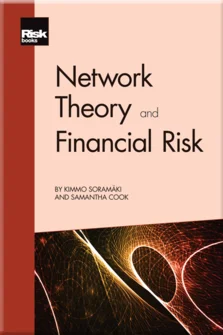Counterparty and Systemic Risk: Exposure Networks
Introduction to Financial Networks
Creating and Describing Networks
Identifying Important Nodes: Centrality Metrics
Uncovering Latent Structure: Clustering and Community Detection
Finding Hidden Links: Projection Networks
Fast Insights: Visualising Networks
Financial Cartography: Network Layouts
Brass Tacks: Complexity Reduction
Market Risk: Asset Correlation Networks
Liquidity and Operational Risk: Interbank Payment Networks
Counterparty and Systemic Risk: Exposure Networks
Financial institutions are interconnected partly because they engage in series of bilateral transactions, which occur as institutions seek to transfer risk. One bank might have excessive residual exposure to interest rate movements, for example, while another might wish to earn premiums by increasing its exposure: these banks meet in a virtual market and exchange “fixed” and “floating” rates. As another example, two banks might have, respectively, surplus and deficit liquidity; these banks might agree on an unsecured loan, a repurchase agreement or a commitment line (Langfield and Soramäki, 2014). The possibilities for relationships of this type are myriad. Transactions of this type lead to counterparty risk: by engaging in such transactions, financial institutions transfer successfully the underlying risk, and as a by-product often gain a stake in the fortunes of their counterparty. This exposure thus forms a link between the two institutions. Moreover, the fortunes of banks are usually highly correlated with one another due to exposures to common risk factors. Retail banks, for example, have similar exposures to credit and interest rate risk: the archetypal common exposure is a
Copyright Infopro Digital Limited. All rights reserved.
As outlined in our terms and conditions, https://www.infopro-digital.com/terms-and-conditions/subscriptions/ (point 2.4), printing is limited to a single copy.
If you would like to purchase additional rights please email info@risk.net
Copyright Infopro Digital Limited. All rights reserved.
You may share this content using our article tools. As outlined in our terms and conditions, https://www.infopro-digital.com/terms-and-conditions/subscriptions/ (clause 2.4), an Authorised User may only make one copy of the materials for their own personal use. You must also comply with the restrictions in clause 2.5.
If you would like to purchase additional rights please email info@risk.net











